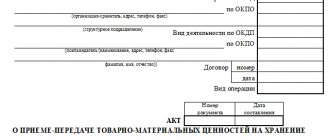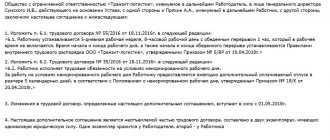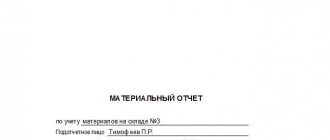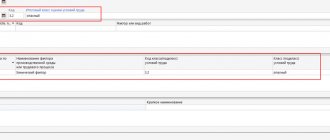What is considered truancy?
The legislation of the Russian Federation regulates that absenteeism is an employee missing work for more than 4 hours in a row without informing the manager. The main difference between absenteeism is the fact that, as a rule, the employee is unable or does not have the desire to write a written reason for missing work. Considering that absenteeism is a disciplinary violation indicated when concluding an employment agreement, there is a need to impose disciplinary punishment, in accordance with Art. 192 of the Labor Code of the Russian Federation (reprimand, reprimand and even dismissal). However, to impose a penalty, a document confirming the fact of absenteeism is required. Therefore, as a result of the absence of an explanatory note, the employee’s direct superior is obliged to draw up a report.
What applies to absenteeism without a good reason?
- An employee’s absence from work for a full working day, regardless of its duration.
- An employee is late for work for more than 4 hours in a row.
- Leaving the enterprise without informing management about the termination of the employment contract at one’s own discretion, or before the end of the work period upon dismissal, or before the end of the contract (in the case of a fixed-term employment agreement).
- Self-care on vacation, as well as self-care on main or additional leave.
However, absenteeism does not include the use of rest days by an employee if the manager unlawfully refuses to provide such time off (for example, when donating blood as a donor).
The procedure for drawing up the act
Drawing up an absence from work report is resorted to in the following cases:
- being late for work;
- long absence from the place designated by the worker;
- truancy.
The act is drawn up immediately at the moment of discovery of a violation for each detected fact. This becomes especially important for ongoing or repeated violations.
An example of ongoing misconduct would be absence from work without explanation for several days. In this case, an act is drawn up for every day. It is possible to issue reports for each half of the working day.
Repeated absences will include, for example, systematic tardiness, delays from lunch breaks, and periodic absenteeism.
At least 3 people who sign it must take part in drawing up the act. It is mandatory for the absence from work report to indicate the place, date and time of its preparation. The executed act is registered in a special journal for recording such documents.
If the fact of lateness or absenteeism is not automatically recorded by the personnel service, then the report serves as the information for the employer’s manager, on the basis of which he instructs this service to record the employee’s absence or tardiness in the time sheet.
What is not considered truancy
Along with the designation of absenteeism, the legislation clearly stipulates the circumstances in which an employee’s absence from work is not considered absenteeism. This:
- An employee is on sick leave.
- Absence due to passing exams, defending a diploma, etc.
- Carrying out state or public obligations.
- Summoning an employee to judicial or law enforcement authorities.
- Arrest of an employee.
- Force majeure (disasters, bad weather, etc.).
- Taking time off when donating blood as a donor.
The listed and other reasons for missing work, if supporting documents are provided, do not apply to absenteeism.
Also, the absence of an employee from work cannot be called absenteeism if the management of the enterprise fails to fulfill its obligations, namely, non-payment of wages for more than 15 days. However, in such circumstances, advance notice to management is required.
Is it possible to challenge the fact of absenteeism?
You need to understand that in most cases this act is drawn up in order to apply some kind of punishment to the employee.
It is possible that the employee himself will not agree with this state of affairs, so he may go to court. It is in court proceedings that the act of absenteeism from work will be considered as evidence of lawful actions on the part of the organization. But still, the employee has the right to challenge the document in court proceedings. Although you need to be prepared to provide evidence of compelling reasons for your absence. In addition, the act may be declared invalid if the employee is not properly familiarized with it. It is highly desirable that these arguments be supported by various information, including documentary evidence. If the employee proves that he is right, all charges against him will be dropped by a court decision. If failure to appear is the reason for dismissal, the court will oblige the employer to return the employee to work.
Although there are other situations. For example, an employee understands perfectly well that the blame lies entirely with him. Accordingly, after drawing up the act, he cannot prove that he was absent for valid reasons. After this, the employee’s absence is considered absenteeism with all the ensuing consequences. In such situations, the punishment is chosen by the employer himself. In most cases, this is a disciplinary sanction in the form of a reprimand, oral or written warning. In special cases, for example, if this is not the first absence, or the employee has other serious violations of the employment contract, the employee may be dismissed.
It happens that the reason for failure to appear is a valid reason, and there is documentary evidence of this. In such situations, the employer drops all charges against the subordinate, and he continues to perform his job duties. In this case, the parties do not have any claims against each other, so the matter does not come to trial.
In general, the heads of organizations try in every possible way to avoid such serious conflicts that are resolved in court. After all, additional checks are often carried out during proceedings in organizations. This is clearly not good for employers. Accordingly, in most cases, such proceedings begin precisely on the initiative of the employee, in whose opinion the punishment was imposed unfairly.
Who draws up the truancy report
Usually, the direct head of the unit is responsible for filling out the report. However, such a document has the right to be drawn up by a personnel employee, lawyer or secretary of the institution. When drawing up an act of absence, it is necessary to involve either a specially formed commission of employees of the institution (at least two people), or simply witnesses (from among the employees), who must sign the document drawn up about the employee’s absence from work.
After filling out the report, it is imperative to familiarize the employee who made the pass, and also write a report to management with the report attached. The head of the institution, based on the documents submitted to him, issues an order to impose disciplinary punishment for absenteeism.
The act must be drawn up no later than one month after the marked omission, otherwise the document loses its legal status and the manager will not have the right to impose a penalty. If a penalty is imposed under such circumstances, the employee has the right to challenge it in court.
Main features of the Employee Absence from Work Act
The act of absence by an employee from work does not have a normative sample, so it must be filled out in any form or according to a sample approved by the institution. The document can be filled out on the institution’s letterhead or on a regular A4 sheet. The act is drawn up in 2 copies and each copy is signed by the members of the commission who drew up the document, including the person responsible for the situation. If the hero of the “celebration” refuses to sign the act, this circumstance is reflected in the document, confirmed by the signatures of the commission members. After this, one copy is sent to the manager, the second is given to the employee.
When filling out the act, it must include the following information:
- About the institution where the violator of discipline works.
- The composition of the commission members participating in the examination of missed work.
- Explanation (if written) of the reasons for missing a day of work.
An example of an employee’s absence from work report
Instructions for registration
There are no strict rules for document formatting, but there are general recommendations about what should be indicated in it.
Key Features
Can be used:
- template developed at the enterprise;
- regular A4 sheet.
2 copies are prepared, signed by the commission and the employee:
- one remains with the employer;
- the second is given to the employee.
If an employee refuses to sign the document, an appropriate note should be made and certified by witnesses.
The act must indicate:
- Day, month, year and time of compilation;
- Registration number;
- Place;
- Name of the enterprise;
- Document title (centered);
- FULL NAME. everyone who appears in the standard;
- The period of absence of the employee (total, beginning and end);
- Explanations from the employee to clarify the reason for absenteeism (with the consent of the employee).
One of the compilation algorithms:
- In the upper right corner is written the standard heading of the enterprise, containing: Full name of the enterprise;
- TIN;
- OGRN.
Video: Answers to questions
https://youtu.be/4k2BPeuZYM8
Sample filling
Let's consider an example of drawing up a document for a fictitious company and employee.
Certificate of absence from work
Novosibirsk city
April 13, 2020
The act was drawn up at 16:00. 50 min. (by local time)
I, the head of the sales department of the Open Joint Stock Company "Agro Zerno Plus" Ivan Ivanovich Ivanov, in the presence of the deputy head of the wholesale sales department Evgeniy Petrovich Dorofeev and the regional manager for wholesale purchases Anatoly Viktorovich Tikhomirov, drew up this act on the following:
On April 13, 2020, salesperson Anastasia Anatolyevna Korneeva was absent from her workplace (at the 3rd warehouse, located at: Novosibirsk, 1st Tikhvinsky lane, 27) from 11 a.m. 15 minutes. until 16 o'clock 35 minutes, total absence time 5 (five) hours during the working day.
An explanatory document about the reason for absence from work is attached.
This act is drawn up in two copies:
- The first copy was sent to the HR department;
- Korneeva A. A second copy was handed over.
The contents of the document are confirmed by the persons present during its preparation with personal signatures:
Deputy Head of Sales Department Evgeniy Petrovich Dorofeev (signature)
Regional manager for wholesale purchases Tikhomirov Anatoly Viktorovich (signature)
The act was drawn up:
Head of Sales Department Ivanov Ivan Ivanovich (signature)
I have read the act and received a copy:
Seller Anastasia Anatolyevna Korneeva (signature)
Let's look at an example of an explanatory note
Explanatory letter
I, Anastasia Anatolyevna Korneeva, was absent from my workplace on April 13, 2020 from 11 a.m. 15 minutes. until 16 o'clock 35 minutes, total absence time 5 (five) hours due to the fact that she began to feel unwell and decided to seek medical help. I spent the entire time I was away at the local clinic, waiting for the doctor, being examined and undergoing tests. A certificate of inoperability is attached.
04/13/2018 Korneeva Anastasia Anatolyevna (signature)
Attention! An employee can be subject to disciplinary liability for absence from work for 30 days. The presence of an employee on officially registered sick leave or on vacation due to him leads to the suspension of this period.
How to draw up an absence from work report
The act is usually filled out according to a standard form and should not cause any difficulties when drawing up. The document consists of:
- Hats.
- Composition of the commission.
- Content part.
- Commission signatures.
- In the “header” - in the middle of the page, the name of the document (“Act”) is written with a brief display of its essence (in this example, “about the absence (absenteeism) of an employee from work). Below is the city where the institution drawing up the act is located and the date it was completed.
- Then the composition of the commission members is listed, indicating their surnames, first names and patronymics, and the positions they occupy.
- In the content part, information about the employee is entered (full full name and position held by him) for whom the act is being filled out. In this case, it is necessary to clearly display the date and time of the absence, if this absence is indicated by hours of absence, displaying the start and end time of the missed work. It is also necessary to display the reason why the employee made the pass. In the absence of explanations, this fact must also be reflected in the act.
- In conclusion, it is required to put the signatures of the participants in the executed act, including the signature of the truant.
If the truant does not agree with the executed document, he has the right to seek protection of his interests in the labor inspectorate or judicial authorities. The practice of such appeals sometimes leads to the cancellation of recorded absenteeism and the corresponding disciplinary action.
Possible reasons for canceling recorded absenteeism and the drawn up report:
- The document compiled does not contain information about the reason for absence, as well as evidence of absence from work for more than 4 hours in a row (there are no witness signatures)
- The employee who admitted the pass refused to sign the report and this fact is not reflected in the document.
- After completing the report, the employee provided management with materials confirming a valid reason for absence from work.
Grounds for dismissal
The employer’s right to dismiss an employee in the event of a single gross violation of labor duties, including due to absenteeism, is enshrined in Article 81 of the Labor Code of the Russian Federation.
The article defines absenteeism as “absence from the workplace without good reason during the entire working day (shift), regardless of its duration, as well as in the case of absence from the workplace without good reason for more than four hours in a row during the working day (shift) " Additional explanations can be found in judicial practice, in particular, an employee can be dismissed in such cases (paragraph 39 of the resolution of the Plenum of the Armed Forces of the Russian Federation dated March 17, 2004 No. 2):










